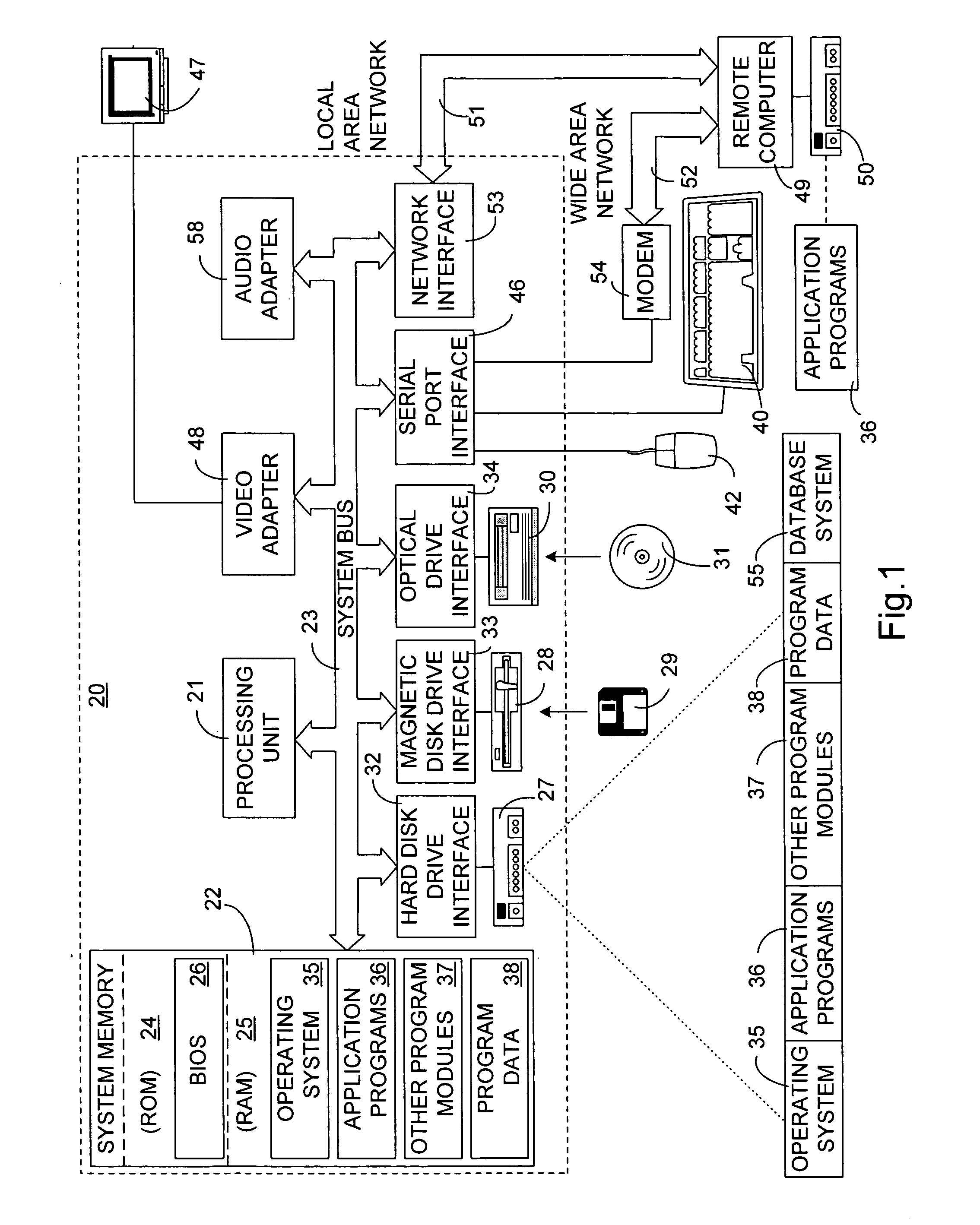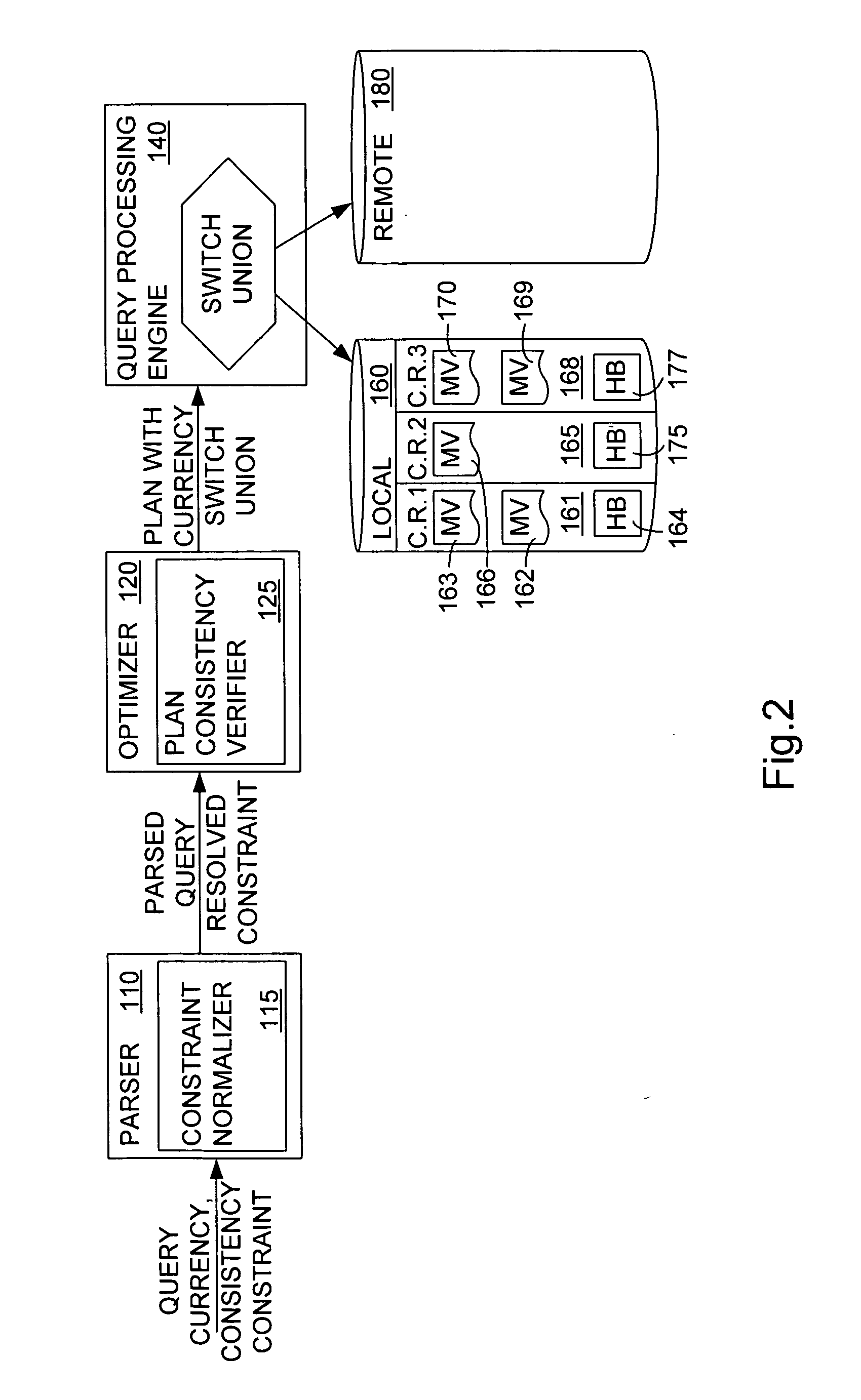Enforcing currency and consistency constraints in database query processing
a database and consistency constraint technology, applied in the field of database query processing, can solve the problems of unnecessarily routing queries to a backend server, application limits on the acceptable “age” of data, and today's systems cannot provide any assistance, so as to improve the utilization of replicated data sources and efficient evaluation of queries
- Summary
- Abstract
- Description
- Claims
- Application Information
AI Technical Summary
Benefits of technology
Problems solved by technology
Method used
Image
Examples
examples
[0084] For the purposes of illustration, a sample database with two local views is used. The two local views are: [0085] cust_prj(c_custkey, c_name, c_nationkey, c_acctbal) [0086] orders_prj(o_custkey, o_orderkey, o_totalprice),
which are projections of a Customer and an Orders table on the backend server, respectively. Cust_prj has a clustered index on the primary key c_custkey and orders_pj has a clustered index on (o_custkey, o_orderkey). There are no secondary indexes. The views are in different currency regions and, hence not guaranteed to be consistent. The region's heartbeat intervals and delays are shown in FIG. 6a.
[0087]FIG. 6b shows the query schemas used in the example. Different query instances are obtained by varying the parameter $K and the currency clause in S1 for Q1 to Q5; $A and $B in S2 for Q6 and Q7. The parameter values used are shown in FIG. 6c with a corresponding logical plan listed in the right column. FIGS. 7a-7e illustrate the different plans selected by...
PUM
 Login to View More
Login to View More Abstract
Description
Claims
Application Information
 Login to View More
Login to View More - R&D
- Intellectual Property
- Life Sciences
- Materials
- Tech Scout
- Unparalleled Data Quality
- Higher Quality Content
- 60% Fewer Hallucinations
Browse by: Latest US Patents, China's latest patents, Technical Efficacy Thesaurus, Application Domain, Technology Topic, Popular Technical Reports.
© 2025 PatSnap. All rights reserved.Legal|Privacy policy|Modern Slavery Act Transparency Statement|Sitemap|About US| Contact US: help@patsnap.com



